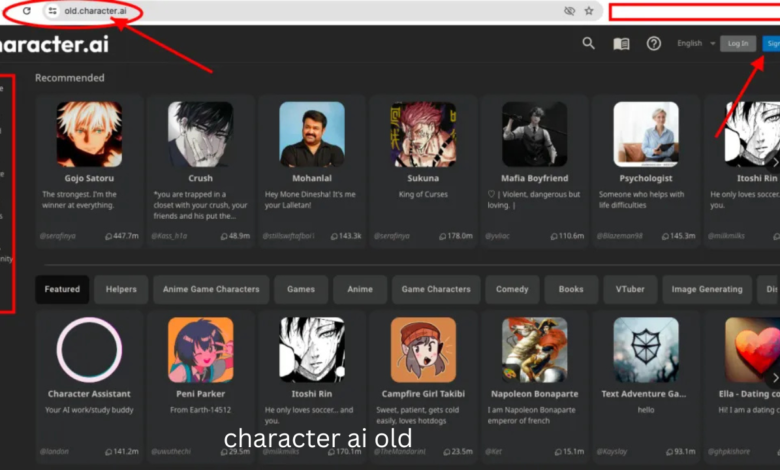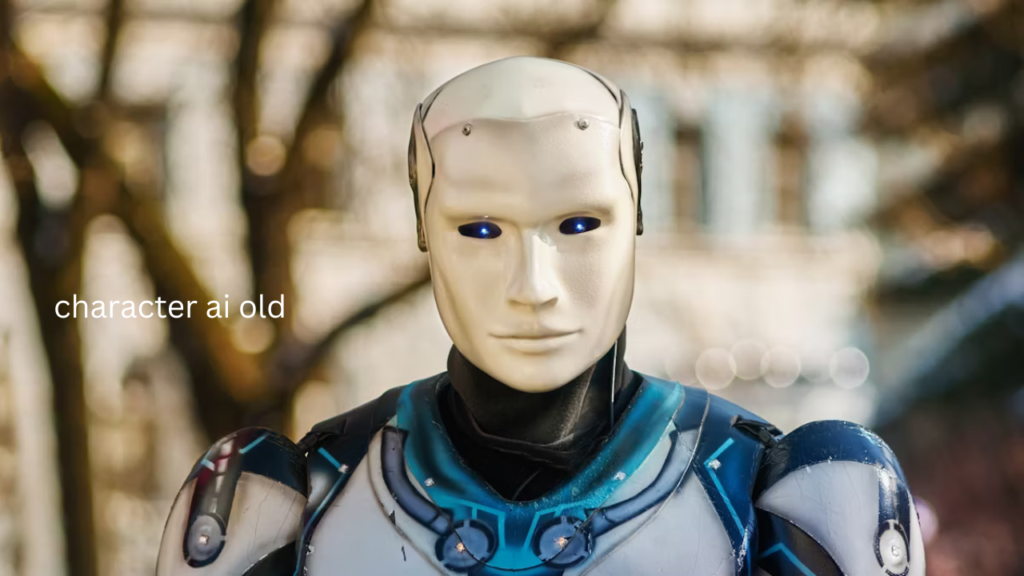Exploring Character AI Old A Look Back at Its Origins

Character AI Old Intelligence (AI) has come a long way since its inception. Character AI has been particularly fascinating among its many branches, offering the ability to create virtual entities with human-like behavior, responses, and interactions. While modern Character AI has achieved incredible sophistication, understanding the origins of “Character AI Old” provides valuable insights into how this technology evolved. This article delves deep into the beginnings of Character AI, exploring its foundational technologies, milestones, and the journey to its current state.
What is Character AI Old?
“Character AI Old” refers to the early iterations of artificial intelligence systems that simulate human-like characters in virtual environments. These early systems laid the groundwork for today’s advanced character AIs, which can be found in video games, virtual assistants, chatbots, and immersive simulations. The term “old” signifies the foundational models and techniques that preceded contemporary advancements in natural language processing (NLP), machine learning (ML), and neural networks.
The Early Days of Character AI

Text-Based Adventures and Simple NPCs
In the early days of computing, Character AI emerged primarily through text-based adventure games like “Zork” and “Colossal Cave Adventure.” These games featured non-playable characters (NPCs) with scripted dialogues and pre-defined responses to user inputs. While rudimentary, they were the first step toward creating dynamic virtual personas.
Rule-Based Systems
The earliest Character AIs were often rule-based. Developers created predefined rules that dictated character responses based on specific inputs. Although these systems lacked adaptability, they showcased how AI could simulate interactions, setting the stage for more advanced technologies.
Chatbots and Conversational Agents
One of the earliest chatbots, ELIZA, developed in the 1960s, was a landmark in Character AI. ELIZA simulated a Rogerian psychotherapist, using pattern matching and scripted responses to create an illusion of understanding. Despite its limitations, ELIZA demonstrated how Character AI could interact with users meaningfully.
Key Milestones in the Evolution of Character AI
From ELIZA to A.L.I.C.E
Following ELIZA, A.L.I.C.E (Artificial Linguistic Internet Computer Entity) was developed in the 1990s. Using a more sophisticated pattern-matching technique, A.L.I.C.E enhanced the conversational depth of character AIs and paved the way for future natural language processing developments.
Video Game Characters
As technology advanced, Character AI began to flourish in the gaming industry. Thanks to improved AI algorithms, games like “The Sims” and “Black & White” showcased virtual characters with more complex behaviors and personalities.
The Rise of Machine Learning
Machine learning introduced adaptability to Character AI. Machine learning allows AIs to learn from interactions and refine their responses, unlike rule-based systems. This shift enabled more dynamic and context-aware virtual characters.
The Technology Behind Character AI Old
Rule-Based Systems
At its core, early Character AI was driven by simple if-then rules. While limited, this approach established the framework for decision-making processes in AI characters.
Pattern Matching
As used by ELIZA and later A.L.I.C.E, pattern matching allowed Character AI to recognize specific phrases and generate pre-programmed responses. This technique was pivotal in advancing conversational agents.
Finite State Machines (FSM)
Finite State Machines helped developers create characters with different states or modes. Each state dictated specific behaviors, allowing for more nuanced character interactions.
How Character AI Old-Shaped Today’s Virtual Characters
Character AI Old played a crucial role in shaping modern virtual personas. The lessons learned from early rule-based and pattern-matching systems contributed to developing neural networks, deep learning models, and advanced conversational AI in today’s technologies like ChatGPT and virtual game characters.
The Legacy of Character AI Old
The pioneering work of early Character AI developers has left an enduring legacy. From enhancing user experiences in video games to laying the groundwork for AI-driven customer support bots, Character AI Old’s influence is undeniable. By examining its origins, we gain a deeper appreciation for the complexities and capabilities of modern AI systems.
Frequently Asked Questions (FAQs)
What is Character AI Old?
Character AI Old refers to the early iterations of artificial intelligence systems designed to create virtual characters with human-like behaviors and responses, primarily seen in early video games, chatbots, and rule-based systems.
How did Character AI Old contribute to modern AI?
Character AI Old established foundational technologies such as rule-based systems, pattern matching, and finite state machines, which influenced the development of advanced AI technologies like machine learning and natural language processing.
What were some of the first examples of Character AI Old?
Some early examples include the chatbot ELIZA, text-based adventure game characters, and NPCs in early video games like “Zork.”
What technologies powered Character AI Old?
Early Character AI relied on rule-based systems, pattern matching, and finite state machines to simulate character behaviors and interactions.
Why is it important to study Character AI Old?
Understanding Character AI Old helps us appreciate the technological evolution and how early innovations laid the groundwork for today’s sophisticated AI systems.
Conclusion
Character AI Old may seem simplistic compared to today’s AI marvels, but its impact on the technological landscape cannot be overstated. By exploring its origins, we gain valuable insights into the evolution of virtual characters and the incredible strides made in artificial intelligence. As AI technology advances, remembering its humble beginnings helps us recognize the innovation and creativity that paved the way for modern achievements.
You May Also Read: https://livermoreartsup.com/office-avstarnews/



